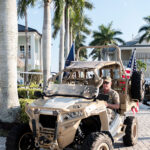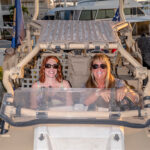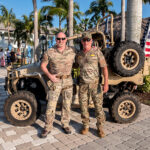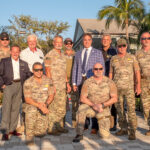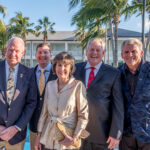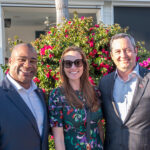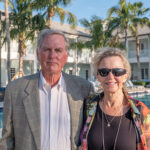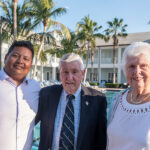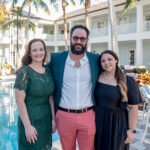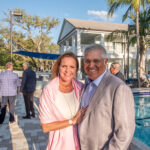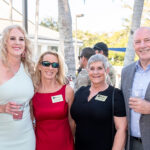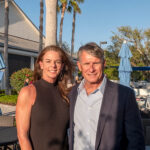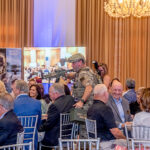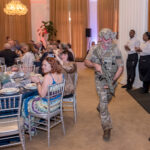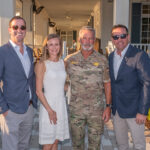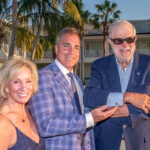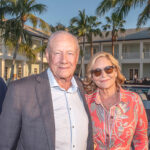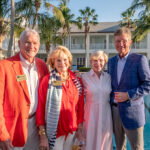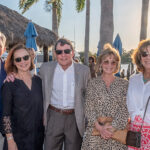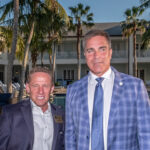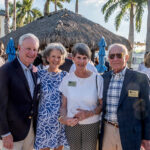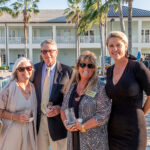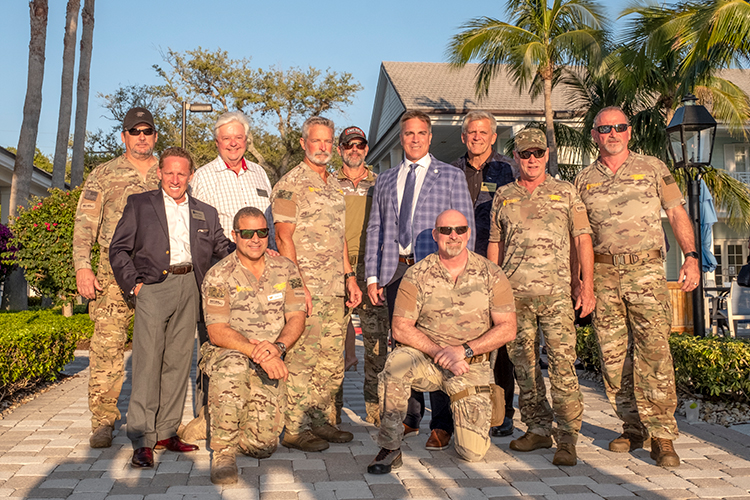
SEAL Team Vero Beach took guests on an ‘Extraordinary Odyssey Exploring Time, Space, Technology and Teamwork’ at the Quail Valley River Club to benefit the National Navy SEAL Museum and its Trident House Charities.
After enjoying cocktails poolside, guests settled in for dinner and remarks from the keynote speaker, Ret. Navy SEAL Capt. and NASA Astronaut Chris Cassidy.
But before they could, museum executive director Grant Mann announced that the SEAL Team Vero Beach Assault Force was engaged in a snatch-and-grab mission that they were able to show via “live feed.”
As the assault force stealthily made their way in from the Indian River Lagoon, creeping through a crowd of unsuspecting Quail Valley club members at play poolside, they retrieved two boxes containing top secret items from two nefarious terrorists, who looked suspiciously like event co-chairs Don McClure and Dr. Jim Schafer.
The crowd breathed a collective sigh of relief as the mission was completed but were then taken by surprise as the dining room doors burst open, and the team members they had just seen via live feed entered the room to check for un-friendlies. After determining that the room was secure, the team delivered the cache and returned to the field to ready for their next mission.
Afterward, in a video presentation, Mann gave a brief history of the museum, explaining that the nonprofit’s mission is to preserve the history and heritage of the Navy SEALs and their predecessors, to honor the fallen at the Navy SEAL Memorial, and to care for special operatives’ families.
“Trident House Charities program is the museum’s four-pillar approach to support the needs of our special operations families,” Mann explained.
That program includes the Trident House, a respite for special operators and their families; scholarships for college, technical or trade school; direct family support; and the K9 Project.
“The National Navy SEAL Memorial is a sacred reminder of the great sacrifice our frogmen and our families make. It is a place of solace and solitude designated for guests and Gold Star families to reflect, honor and remember,” said Mann.
“To become a Navy SEAL is pretty tough,” said Mann as he introduced Cassidy, one of three Navy SEAL astronauts.
He noted how few people make it through Hell Week and BUD/S (Basic Underwater Demolition/SEAL) training, let alone go on to become an astronaut.
About six years into his SEAL team career, Cassidy said he met Bill Shepherd, the very first Navy SEAL to become an astronaut. “It was that conversation that made me realize it was an opportunity that exists,” he said. Later, he discovered that SEAL and astronaut training weren’t terribly dissimilar.
Cassidy spent 18 years at the Johnson Space Center in Houston and went on three space flights and 10 spacewalks. He flew on the International Space Station, Space Shuttle Endeavor and the Russian Soyuz spacecraft.
“Now, I’m here telling you how we pee and poop in space,” quipped Cassidy before a rapt audience, as he related the thrill of seeing Earth from space for the first time, finding an air leak using Earl Grey tea, and what it feels like to lose contact with your partner outside the ship.
The National Navy SEAL Museum in Fort Pierce has grown over the years to include the Memorial Wall, which has the name of every frogman who died in combat or in training since World War II; the National Memorial Garden, with 1,000 flowers representing the locations where Navy frogmen have fought and died; the National Naval Special Warfare K9 Memorial; and the Living Beach, which contains sand from locations around the globe where frogmen have fought, trained and died.
For more information, visit navysealmuseum.org.
Photos by Joshua Kodis

